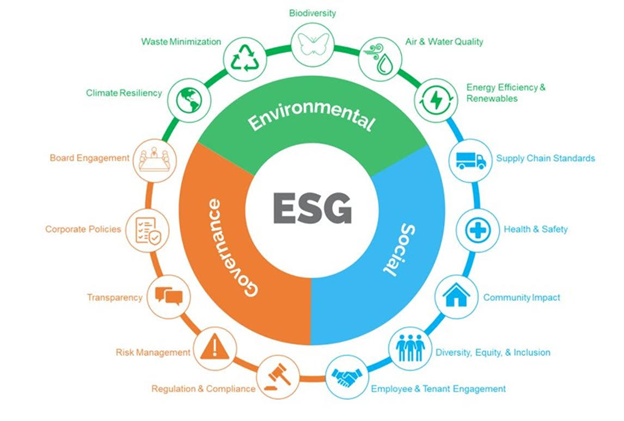The 28th Session of the Conference of the Parties (COP28) to the United Nations Framework Convention on Climate Change (UNFCCC), was held last month in Dubai. The meeting’s four key pillars centered around the areas of fast-tracking energy transition and climate finance, with an emphasis on social values – specifically livelihoods and inclusivity. As with many global meetings and initiatives, it has been criticized regarding the vagueness of language. However, COP28 has also produced an alignment that near-zero-emission and resilient buildings will be the new normal in all regions by 2030.
With nearly 40% of global carbon dioxide emissions coming from the real estate sector, there are a few key takeaways and action items asset owners and managers will have no regrets investing in, according to Evolution Sustainability Group (Evolution), a full-service energy management, engineering, and sustainability consulting firm. These include:
Data Management: Commercial real estate operators should organize and centralize consumption data, with energy data being the top priority. Other important areas to track include water, waste, procurement of key categories such as forestry products, supply chain metrics, and more. The universal effort currently is measuring the global “stocktake” of carbon, so each organization’s accurate metrics will be needed to accomplish that task.
Technology: Embracing innovation, software, and sustainable technologies within asset portfolios can help property managers and owners become more efficient in consumption and reduce their carbon and waste footprints. Proper project management and implementation are critical for success in this domain, as some organizations do not have staff dedicated to environmental, social, and governance (ESG) initiatives.
Stakeholder Engagement: Assemble a cross-departmental ESG or Sustainability Committee that meets regularly to prioritize projects, implement initiatives, educate the organization, and provide accountability.
Green Certifications: These certifications provide third-party verification of environmental and social performance through a building’s design, construction, and/or occupancy. As there are several certifications available, companies should identify the right one for their organization, ensuring alignment with ESG goals, vision, and budget, with the help of a competent advisor or assessor.
Pay attention to the S and the G: While most property operators have their attention on Environmental issues, they should also invest equal effort in materializing their social and governance efforts. Social efforts include areas anywhere from Diversity, Equity, and Inclusion (DEI) to establishing ethical supply chain standards. Governance efforts include updating and adding 21st-century policies focused on activities such as natural resource use and risk management. Since organizations with strong social efforts enjoy greater employee morale and engagement, there are financial savings from reduced employee turnover and other avoided HR costs.
Get Support: Organizations that do not have mature sustainability programs may not have the staff, bandwidth, or expertise to get started effectively. This wastes valuable time and effort in a landscape that is rapidly maturing and moving from voluntary to mandatory. The regulatory landscape in ESG Reporting is rapidly changing and increasingly important to investors, tenants, employees, and other stakeholders, and organizations should pay attention.
Resham Shirsat, ESG Director at Evolution, says “By integrating social inclusion and robust governance into environmental efforts, companies tap into new markets, mitigate risks, and attract green investors – all while protecting the environment and improving their bottom line.”







